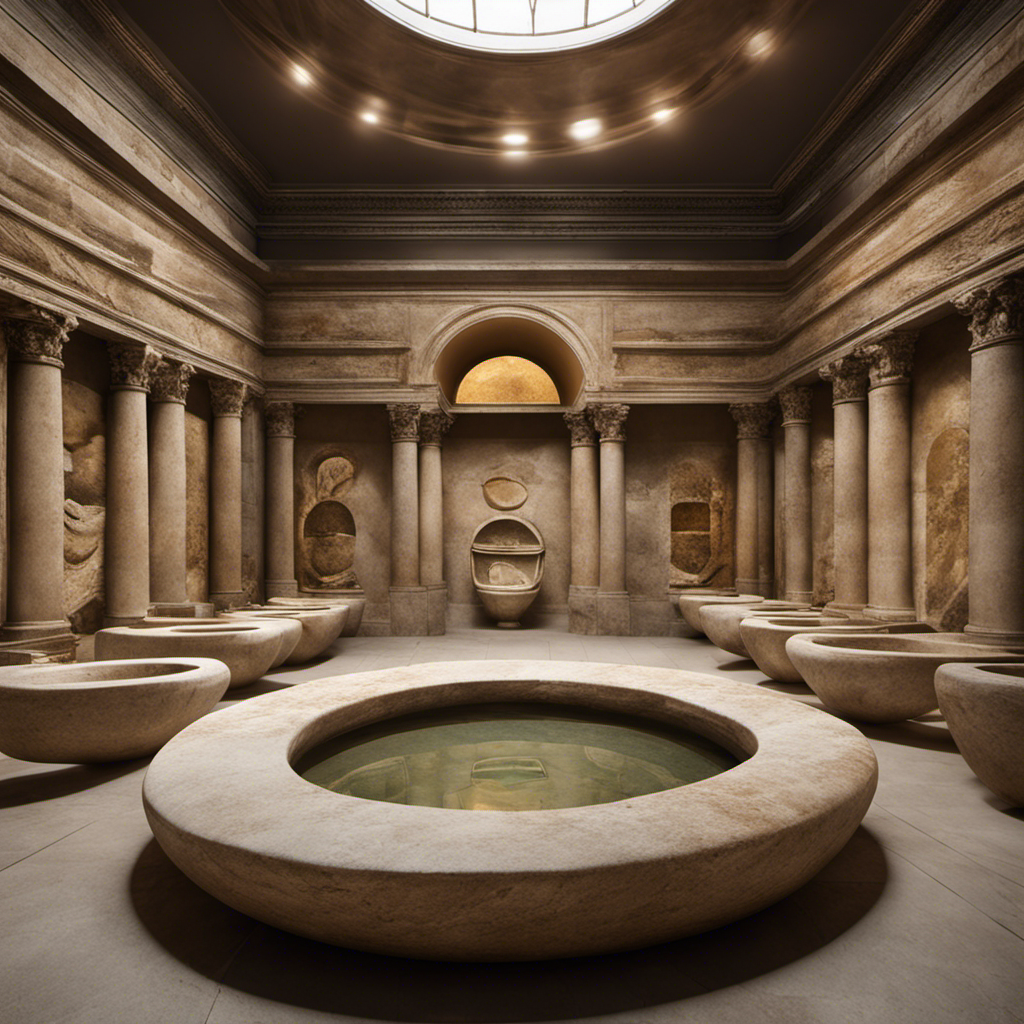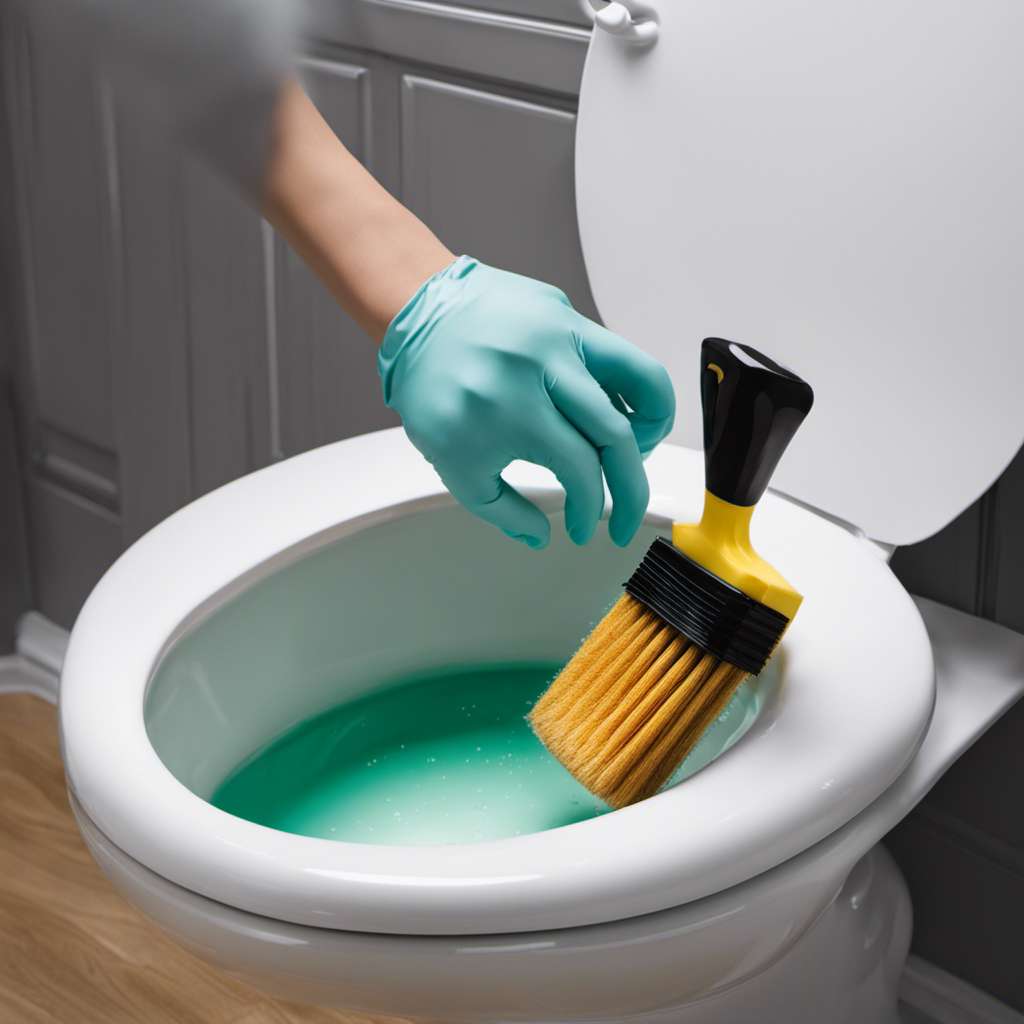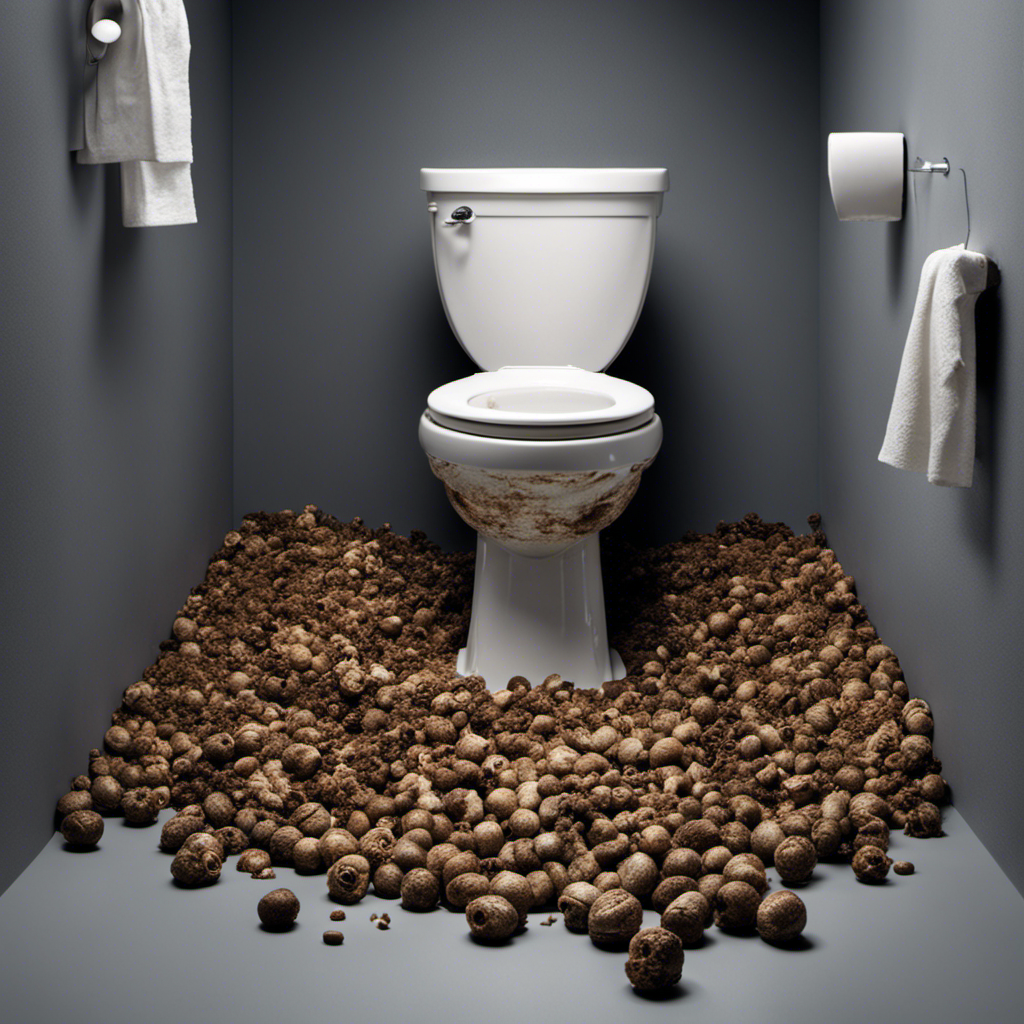As I sit here, comfortably perched upon my porcelain throne, I can’t help but wonder: who was the brilliant mind behind this essential invention?
The toilet, a marvel of modern sanitation, has revolutionized our lives in ways we often take for granted.
In this article, we will delve into the fascinating history of the toilet, exploring the ancient sanitation systems, early innovations, and notable figures who contributed to its evolution.
Prepare to be amazed by the ingenuity and ingenuity that has shaped the bathroom experience as we know it today.
Key Takeaways
- Ancient civilizations, such as Rome and Egypt, had complex sanitation systems including sewage drains and underground drain systems.
- Early innovations in waste disposal included chamber pots and outdoor privies.
- Notable figures in toilet invention include Thomas Crapper, Alexander Cummings, Joseph Bramah, Sir John Harington, and Albert Giblin.
- Modern toilet advancements focus on hygiene, sustainability, and ease of cleaning, and have significantly improved waste management practices.
Ancient Sanitation Systems
You might be surprised to learn that in ancient times, people used a variety of sanitation systems to manage their waste.
Sanitation practices in ancient civilizations were diverse and influenced by cultural perspectives on hygiene in ancient societies.
For example, in ancient Rome, public toilets called ‘latrines’ were built to accommodate multiple users at once. These latrines were connected to a complex system of sewage drains that carried waste away from the city.
In ancient China, the use of chamber pots and privies was common, with waste being collected and transported to designated areas for disposal.
Similarly, in ancient Egypt, a system of underground drains was used to manage waste.
These ancient sanitation systems highlight the ingenuity and resourcefulness of ancient civilizations in maintaining cleanliness and hygiene.
Early Innovations in Waste Disposal
Early innovations in waste disposal included the use of chamber pots and outdoor privies. These early plumbing systems aimed to manage human waste and maintain hygiene. However, as societies grew larger and more complex, the need for more efficient waste management techniques became apparent. The table below illustrates the evolution of waste disposal methods:
| Waste Disposal Method | Description |
|---|---|
| Chamber pots | Ceramic or metal pots used for collecting human waste |
| Outdoor privies | Open-air structures with a hole for waste disposal |
| Sewer systems | Underground networks that transported waste away from homes |
| Flush toilets | A system that uses water to flush waste into a sewer or septic tank |
These early innovations laid the foundation for modern waste disposal practices. The development of plumbing systems and waste management techniques revolutionized sanitation, leading to improvements in public health and hygiene. Today, we continue to build upon these early innovations to create more sustainable and efficient waste management solutions.
The Birth of the Modern Toilet
As people’s needs for improved waste management grew, the development of a new sanitation system became crucial.
The impact of improved sanitation cannot be overstated. With the implementation of modern toilets, diseases and infections caused by unsanitary conditions have significantly decreased, leading to improved public health and quality of life.
The role of public health in toilet design is essential. Factors such as ease of cleaning, proper disposal of waste, and prevention of cross-contamination are taken into consideration. Public health experts work closely with engineers and designers to create toilets that are hygienic, efficient, and meet the needs of the community.
The birth of the modern toilet has revolutionized waste management and has had a profound impact on public health worldwide.
Toilet Technology Throughout History
Throughout history, advancements in technology have drastically improved the way waste is managed and disposed of. When it comes to toilet technology, there have been significant developments in toilet hygiene practices and cultural perspectives on toilets.
Different cultures have had varying approaches to toilet hygiene, with some using communal toilets and others implementing more private and individual facilities. These cultural perspectives have shaped the design and functionality of toilets in different parts of the world.
Today, toilets are equipped with features like flushing mechanisms, water-saving options, and self-cleaning capabilities, all aimed at improving sanitation and hygiene. The evolution of toilet technology has played a crucial role in promoting health and sanitation practices globally.
Now, let’s delve into the notable figures in toilet invention and their contributions to this essential aspect of our lives.
Notable Figures in Toilet Invention
One of the most significant contributors to toilet technology is Thomas Crapper, who is credited with popularizing the modern flush toilet. His innovative design revolutionized the way we handle waste disposal and has since become a staple in households worldwide. However, Crapper is not the only influential inventor in the history of toilets. Many notable figures have made significant contributions to the development of revolutionary designs. To illustrate this, let’s take a look at a table showcasing some of these inventors and their remarkable creations.
| Inventor | Invention | Impact |
|---|---|---|
| Alexander Cummings | S-trap | Improved waste removal |
| Joseph Bramah | Valve-operated flush | Enhanced flushing efficiency |
| Sir John Harington | Water closet | Improved hygiene |
| Albert Giblin | Flush rim toilet | Prevented bacterial growth |
| Thomas Twyford | One-piece ceramic flushing toilet | Easy to clean and maintain |
As we can see from this table, these inventors played a crucial role in shaping the evolution of toilet design. Their groundbreaking innovations have greatly improved sanitation, hygiene, and overall comfort. Now, let’s explore the next section about the evolution of toilet design and how it has progressed over the years.
The Evolution of Toilet Design
When discussing the evolution of toilet design, it’s important to examine both ancient toilet innovations and modern toilet advancements.
Ancient civilizations such as the Indus Valley Civilization and the Roman Empire had their own unique toilet systems that were highly advanced for their time.
These early innovations laid the foundation for the modern toilets we use today, which have seen significant advancements in terms of water efficiency, hygiene features, and overall design.
Ancient Toilet Innovations
Ancient civilizations had already developed innovative toilet systems. The ancient toilet hygiene practices varied across different cultures, but they all recognized the importance of cleanliness and sanitation.
In ancient Rome, for example, public toilets were equipped with running water and drainage systems. These advancements in toilet design not only improved hygiene but also had cultural significance. They were places where people gathered, socialized, and even conducted business. The communal nature of these facilities fostered a sense of community and provided a platform for social interaction.
These ancient toilet innovations laid the foundation for modern toilet advancements, which we will explore in the next section. The evolution of toilets throughout history demonstrates the continuous quest for improved sanitation and comfort.
Modern Toilet Advancements
After exploring the ancient toilet innovations, let’s dive into the modern advancements in toilet designs. Today, toilet hygiene and sustainable designs have become paramount in the development of new toilets. With a focus on improving sanitation and reducing environmental impact, engineers and designers have come up with innovative solutions.
One such advancement is the dual-flush toilet, which offers two options for flushing: a smaller flush for liquid waste and a larger flush for solid waste. This not only saves water but also promotes better hygiene. Another sustainable design is the composting toilet, which converts human waste into compost that can be used as fertilizer. This eliminates the need for water-based sewage systems and reduces pollution.
To emphasize these advancements, here is a table showcasing the features of modern toilets:
| Advancement | Benefits |
|---|---|
| Dual-flush toilets | Water conservation |
| Composting toilets | Sustainable waste management |
These modern toilet advancements demonstrate how innovation can address both hygiene and environmental concerns.
Conclusion
In conclusion, the invention of the toilet revolutionized sanitation systems and waste disposal.
From ancient civilizations to modern times, the evolution of toilet design has been a fascinating journey.
While many notable figures have contributed to its development, the true mastermind behind its creation remains a mystery. Who could have possibly conceived such a life-changing invention? The answer is yet to be discovered.
But one thing is for certain, the invention of the toilet has forever changed the way we live and has become an essential part of our daily lives.










